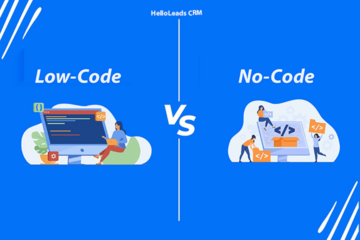
In today’s highly competitive digital world, where countless websites vie for attention, making yours stand out is essential for online success. Search Engine Optimization (SEO) plays a crucial role in boosting your website’s visibility and driving more organic traffic. By understanding and implementing effective SEO strategies, you can climb the search engine rankings and reach a wider audience.
As the digital landscape continues to evolve, SEO remains a cornerstone of online marketing. Research consistently show that organic search results receive significantly more clicks than paid advertisements. This means investing in SEO can lead to sustainable traffic growth without the ongoing costs of ads. By mastering and implementing effective SEO strategies, you can steadily climb the search engine rankings and achieve long-term growth.
Whether you’re a small business owner, a blogger, or a digital marketer, mastering SEO is essential to driving traffic to your website. However, there are common pitfalls that can undermine your efforts. Here are key mistakes to avoid:
- Neglecting Mobile Optimization: With the majority of users browsing on mobile devices, a lack of mobile-friendly design can lead to missed opportunities and decreased traffic.
- Ignoring User Intent: Focus on creating content that addresses the needs and questions of your audience rather than just focusing on keywords.
- Overstuffing Keywords: This can harm readability but can also lead to penalties from search engines for violating their guidelines on keyword usage.
Staying informed about emerging trends can also give you a competitive edge in the SEO game. Some key trends to watch include:
- Voice Search: As smart speakers become more popular, optimizing for voice search is becoming increasingly essential.
- Video Content: Search engines favour diverse content types, so integrating videos can improve engagement and SEO.
Although SEO might seem complicated, with the right approach, you can simplify the process and see real, tangible results.
Here are seven essential tips to help you simplify SEO and boost your website traffic:
1. Keyword Research is King

- Identify Relevant Keywords: Use tools like Google Keyword Planner, SEMrush, Ahrefs or Moz to discover keywords that your target audience is searching for. When selecting keywords, consider factors such as search volume, competition, and relevance.
- Long-Tail Keywords: Incorporate long-tail keywords—more specific phrases that target niche audiences—to reduce competition. These often yield higher conversion rates by addressing users with specific intents.
Keyword Placement: Strategically place your chosen keywords in titles, headings, meta descriptions, and body text to enhance search engine rankings.
Ensure these keywords fit naturally within the text to maintain readability and avoid the pitfalls of keyword stuffing, which can harm your ranking.
2. Create High-Quality Content
- Value-Driven Content: Focus on creating informative, engaging material that delivers real value to your audience. This may encompass blog posts, articles, videos, infographics, and other types of content. Consider using tools like Yoast SEO, which helps optimize your content for better visibility as you write.
- Regular updates: Keep your website fresh by consistently updating your content. Regular refreshed content not only encourages visitors to return but also signals to search engines that your site is active and relevant.
- Original Content: Stand out by offering unique and original content that sets you apart from the competition. Avoid plagiarism and duplicate content, as search engines prioritize originality and quality.
- Content Length: Aim for a minimum of 1,500 to 2,000 words per post or article to offer in-depth information. Longer content typically performs better in search rankings and provides more value to readers.
3. Optimize Your Website Structure
- User-Friendly Navigation: Ensure your website is user-friendly, with straightforward menus and an organized layout. This not only enhances user experience but also helps search engines index your site more effectively.
- Mobile-Friendliness: With an increasing number of users browsing on mobile, it’s crucial to optimize for mobile devices. Google favors mobile-friendly sites in its search rankings, making it essential for both user experience and SEO. A responsive design ensure your website adapts to different screen sizes, offering a seamless experience across devices.
- Fast Loading Times: Boost your site’s loading speed to improve both user satisfaction and SEO. Use tools like Google PageSpeed Insights to assess and enhance your site’s speed on both desktop and mobile devices. Faster load times reduce bounce rates and can positively impact your search rankings.
4. Build Backlinks

- Quality Over Quantity: Prioritize securing high-quality backlinks from authority websites. A handful of high-quality backlinks have a greater impact on search rankings compared to a large number of low-quality links.
- Guest Posting: Write and contribute valuable content to reputable blogs and websites in your industry. Choose sites with a good reputation to maximize the benefits of your guest posts.
- Broken Link Building: Find broken links on other websites and reach out to propose replacing them with links to your relevant content. This strategy not only assists the site owner maintain their site’s integrity but also earns you a valuable backlink, enhancing your own SEO efforts. Tools like Ahrefs or Check My Links can help identify these opportunities.
5. Local SEO for Businesses
- Google My Business: Claim and optimize your Google My Business listing by ensuring that your business name, address, and contact information are accurate. Add high-quality images of your business and services, and encourage satisfied customers to leave positive reviews. A well-maintained GMB profile significantly improves local visibility and builds trust with potential customers.
- Local Citations: Ensure that your NAP (Name, Address, Phone number) information is consistent across local directories and online listings. Consistency improves your local search presence and builds trust with search engines. Verifying your business details across Yelp, Yellow Pages, and other local listings helps build your credibility in local search.
- Local Keywords: Use local keywords into your content and meta tags to effectively target customers in your area. This helps your business appear in relevant local searches, attracting more local traffic. For example, phrases like “best bakery in [city]” or “plumber in [neighborhood]” help you target local customers more effectively, driving traffic from nearby users searching for your services.
6. Technical SEO
- Website Speed: A fast-loading website is crucial for both user experience and search engine rankings. This can be achieved by compressing images, minifying CSS and JavaScript files, and utilizing a content delivery network (CDN) to boost overall performance.
- Mobile-Friendliness: Adopt a mobile-first approach to design your website responsively. Ensure that all pages are accessible and display correctly on various devices, as an increasing number of users browse on mobile. Google prioritizes mobile-friendly sites in its rankings, making this an essential aspect of your SEO strategy. .
- XML Sitemap: Create an XML sitemap to help search engines in crawling and indexing your pages efficiently, thereby improving your site’s visibility in search results.
- Robots.txt: Utilize a robots.txt file to instruct search engines on which pages to crawl and which to ignore, effectively managing your site’s indexing and ensuring that only relevant content is prioritized. This file instructs search engine crawlers on which pages to index and which to ignore, allowing you to prioritize relevant content and improve your overall SEO strategy.
7. Track and Analyze Your Results

- Google Analytics: Use Google Analytics to gain insights into website traffic, user behavior, and conversion rates. This powerful tool allows you to track how visitors interact with your site, which pages are most popular, and where users drop off. Utilize this data to identify areas for improvement and refine your content strategy accordingly.
- SEO Tools: Incorporate SEO tools such as Google Search Console, SEMrush, or Ahrefs to monitor keyword rankings, backlinks, and other relevant metrics. These tools provide detailed reports on your website’s performance and help you uncover opportunities for optimization, ensuring that you stay competitive in search engine rankings.
- Regular Analysis: Schedule regular performance reviews to evaluate your website’s metrics and make data-driven adjustments to your SEO strategy. This ongoing analysis allows you to adapt to changing trends, assess the impact of your SEO efforts, and ensure that your strategies remain aligned with your business goals.











